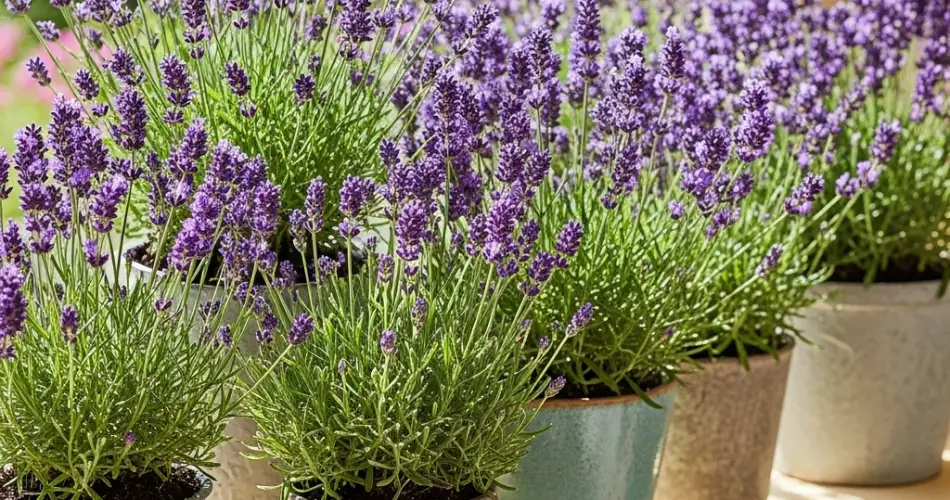Lavender is one of the most beloved aromatic herbs worldwide, prized for its beautiful purple flowers, soothing fragrance, and versatile uses in cooking, crafts, and natural remedies. While traditionally grown outdoors in gardens, lavender can thrive indoors when grown properly in containers. If you have a sunny windowsill, you can cultivate lavender successfully, bringing both beauty and a calming scent to your home year-round.
This guide will walk you through everything you need to know about growing lavender in containers on your sunny windowsill—from selecting the right variety to planting, watering, and care.
Why Grow Lavender Indoors?
Growing lavender indoors offers several advantages:
-
Year-round enjoyment: You can enjoy fresh lavender flowers and fragrance regardless of the season.
-
Space-saving: Ideal for those with limited outdoor space or who live in apartments.
-
Control over conditions: You can manage light, temperature, and watering more easily than outdoors.
-
Pest reduction: Indoor lavender is less prone to many garden pests and diseases.
Choosing the Right Lavender Variety for Containers
Not all lavender varieties are equally suited for container growing indoors. For best results, select varieties that stay compact and tolerate indoor conditions:
-
English Lavender (Lavandula angustifolia): Classic variety with strong fragrance and compact growth.
-
French Lavender (Lavandula dentata): Attractive serrated leaves and longer blooming period.
-
Spanish Lavender (Lavandula stoechas): Unique “rabbit ear” flower petals and smaller size.
Look for dwarf or compact cultivars labeled for container growth to avoid overcrowding.
Selecting the Perfect Container
Choosing the right container is crucial for lavender health.
-
Size: Select a pot at least 10-12 inches in diameter with enough depth for roots to spread.
-
Material: Terracotta or ceramic pots are ideal as they allow soil to breathe and help prevent overwatering.
-
Drainage: Ensure the container has multiple drainage holes to avoid waterlogging, which can cause root rot.
Using the Best Soil Mix
Lavender prefers well-draining, slightly alkaline soil.
-
Use a sandy or gritty potting mix designed for cacti or succulents.
-
You can also prepare your own mix by combining equal parts potting soil, perlite or coarse sand, and compost.
-
Avoid heavy, moisture-retaining soils that can suffocate roots.
Planting Lavender on Your Windowsill
Follow these steps for planting:
-
Fill your container about two-thirds full with prepared soil mix.
-
Remove lavender from its nursery pot and gently loosen the roots.
-
Position the plant in the container, filling around the roots with soil.
-
Press soil lightly and water thoroughly until water drains from the bottom.
Positioning for Optimal Light
Lavender needs plenty of bright light to thrive indoors.
-
Place the container on a sunny windowsill that receives at least 6-8 hours of direct sunlight daily.
-
South- or west-facing windows are usually the best choices.
-
If natural light is insufficient, supplement with a grow light for 10-12 hours daily to maintain healthy growth and flowering.
Watering Lavender in Containers
Proper watering is essential to prevent common problems.
-
Water lavender deeply but infrequently. Allow the top inch of soil to dry out before watering again.
-
Overwatering leads to root rot and fungal diseases.
-
Reduce watering frequency in winter when growth slows.
-
Always empty excess water from the saucer under the pot to prevent waterlogging.
Fertilizing Your Lavender
Lavender is a light feeder and doesn’t require heavy fertilization.
-
Use a balanced, slow-release fertilizer at planting time.
-
During the growing season, feed once a month with a diluted liquid fertilizer.
-
Avoid high-nitrogen fertilizers that promote leaf growth at the expense of flowers.
Pruning and Maintenance
Regular pruning keeps your lavender healthy and encourages more blooms.
-
Trim back spent flower spikes to encourage new growth.
-
Prune the plant lightly in early spring to maintain shape and prevent legginess.
-
Avoid cutting into old wood, as lavender can struggle to regrow from woody stems.
Controlling Indoor Conditions
-
Maintain temperatures between 65°F and 75°F (18°C to 24°C) during the day.
-
Avoid placing lavender near heating vents or drafts.
-
Ensure good air circulation around the plant to reduce fungal risks.
Managing Common Issues
-
Yellow or drooping leaves: Often a sign of overwatering or poor drainage.
-
Powdery mildew: Can develop if humidity is too high or air circulation is poor.
-
Pests: Occasionally, spider mites or aphids may appear; treat with insecticidal soap.
Harvesting Lavender
You can harvest lavender flowers once the blooms are fully open but before they start to fade.
-
Cut flower stalks early in the morning when the fragrance is strongest.
-
Use fresh flowers for crafts or drying for long-lasting sachets and decorations.
Summary
Cultivating lavender on your sunny windowsill is a rewarding and manageable way to bring natural beauty and fragrance into your home. By selecting the right variety, using well-draining soil and containers, providing ample light, and practicing proper watering and pruning, you’ll enjoy thriving lavender plants that bloom abundantly year-round.
Whether you want fresh cut flowers, aromatic herbs, or just the pleasure of growing a stunning plant indoors, container-grown lavender is an excellent choice—even for beginners.



